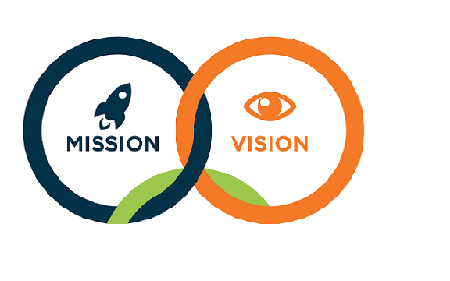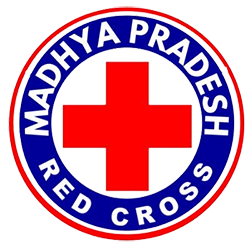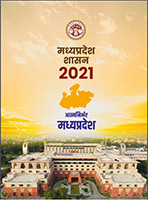Hospital
IRCS Branch Rules
Rules for State/UT/District Branches of the Indian Red Cross Society made under Section 5 of the Indian Red Cross Society Act, 1920 (as Amended by Act No. 22 of 1956 and the Adaptation of Laws (No.4) Order of 1957 and the Act No.14 of 1992) have been approved by the President of IRCS (Hon’ble President of India).
The Rules deal with mission and objectives of the Red Cross, legal provisions of the branches, membership & fundraising rules and governance and management of the State/UT/District Branches.
Donation
The Red Cross renders its humanitarian services with the help and cooperation of people at all levels of the society. The society accepts donations in cash or by way of cheques and demand drafts. For donations/contributions, please contact the nearest State/UT/District Red Cross Branch.
Origin
History of Red Cross and Red Crescent Movement
Young Swiss businessman, Jean Henry Dunant was appalled by the condition of the wounded soldiers he happened to see in the battle field of Solferino , Italy in 1859 during the Franco - Austrian war. He arranged relief services with the help of the local community immediately. He wrote the book 'Memory of Solferino' suggesting that a neutral organization be established to aid the wounded soldiers in times of war. Just a year after the release of this book, an international conference was convened in Geneva to consider the suggestions of Henry Dunant and thus the Red Cross Movement was born. International Red Cross Movement was established by Geneva Convention of 1864. The name and the emblem of the movement are derived from the reversal of the Swiss national flag, to honor the country in which Red Cross was found.
Origin of Indian Red Cross Society
During the first world war in 1914, India had no organization for relief services to the affected soldiers, except a branch of the St. John Ambulance Association and by a Joint Committee of the British Red Cross. Later, a branch of the same Committee was started to undertake the much needed relief services in collaboration with the St. John Ambulance Association in aid of the soldiers as well as civilian sufferers of the horrors of that great war. A bill to constitute the Indian Red Cross Society, Independent of the British Red Cross, was introduced in the Indian Legislative Council on 3rd March 1920 by Sir Claude Hill, member of the Viceroy's Executive Council who was also Chairman of the Joint war Committee in India . The Bill was passed on 17th March 1920 and became Act XV of 1920 with the assent of the Governor General on the 20th March 1920 .
On 7th June 1920 , fifty members were formally nominated to constitute the Indian Red Cross Society and the first Managing Body was elected from among them with Sir Malcolm Hailey as Chairman.
Indian Red Cross Society is a member of the International Federation of Red Cross and Red Crescent Movement. Relations between the IRCS and the India Delegation of the Federation are strong.
Indian Red Cross Society has partnership with National Red Cross and Red Crescent Societies, St.John Ambulance, International Federation of Red Cross and Red Crescent Movement (IFRC), International Committee of the Red Cross (ICRC ), Multinational firms. Individuals and others in supporting IRCS activities. It also coordinates with Indian Government and other agencies ( UNDP, WHO etc ).
Who we are

The Indian Red Cross is a voluntary humanitarian organization having a network of over 700 branches throughout the country, providing relief in times of disasters/emergencies and promotes health & care of the vulnerable people and communities. It is a leading member of the largest independent humanitarian organization in the world, the International Red Cross & Red Crescent Movement. The movement has three main components, the International Committee of Red Cross (ICRC), 187 National Societies and International Federation of Red Cross and Red Crescent Societies.
Mission
The Mission of the Indian Red Cross is to inspire, encourage and initiate at all times all forms of humanitarian activities so that human suffering can be minimized and even prevented and thus contribute to creating more congenial climate for peace.
Vision & Mission
Our Vision
To improve the lives of vulnerable people in India and internationally by mobilising the power of humanity.
Our Mission
The Mission of the Indian Red Cross Society is to prevent and alleviate suffering with complete impartiality, making no discrimination as to nationality, race, sex, religious beliefs, language, class or political opinions.
To be a leading humanitarian organisation in India, improving the lives of vulnerable people through services delivered and promotion of humanitarian laws.
To promote the Fundamental Principles of the Movement and the International Humanitarian Law in order to inculcate humanitarian ideals among the population, and in particular among children and youth.

Fundamental Principles
7 Fundamental Principles of Red Cross Society
1Humanity
The International Red Cross and Red Crescent Movement, born of a desire to bring assistance without discrimination to the wounded on the battlefield, endeavors, in its international and national capacity, to prevent and alleviate human suffering wherever it may be found. Its purpose is to protect life and health and to ensure respect for the human being. It promotes mutual understanding, friendship, cooperation and lasting peace amongst all peoples.
2 Impartiality
It makes no discrimination as to nationally, race, religious beliefs, class or political opinions. It endeavors to relieve the suffering of individuals, being solely by their needs, and to give priority to the most urgent cases of distress.
3Neutrality
In orders to enjoy the confidence of all, the Movement may not take sides in hostilities or engage in controversies of a political, racial, religious or ideological nature.
4 Independence
The Movement is independent. The National Societies, while auxiliaries in the humanitarian services of their governments and subject to the laws of their respective countries, must always maintain their autonomy so that they may be able at all times to act in accordance with the principles of the Movement.
5 Voluntary service
It is voluntary relief movement not prompted in any manner by desire for gain.
6 Unity
There can be only one Red Cross Or Red Crescent in any one country. It must be open to all. It must carry on its humanitarian work throughout its territory.
7Universality
The International Red Cross and Red Crescent Movement, in which all societies have equal status and share equal responsibilities and duties in helping each other, is worldwide.
Membership
All member are associated with the Red Cross world over.
The Patron membership certificates issued by the national Headquarters of the Indian Red Cross Society are signed by Honourbale President of India, in his capacity as President of the Indian Red Cross Society.
Vice – Patron, Life Member and Life Associate membership certificates are signed by the Chairman and Secretary General of the society.
Indian Red Cross Society has its branches in every state, union territory and district level. Membership is obtained by enrolling in the respective state/district branch of the India Red Cross society to which one belongs.
On becoming Patron, Vice-Patron and Life member of the India Red Cross Society who gets the opportunity to be invited , on the recommendations of the enrolling state/district Branch, for attending the Annual General Meeting of the society. The Annual General Meeting is presided by Honourbale President of India .
On becoming member in any grade of membership, the individual helps in rendering Red Cross a noble cause to serve the most vulnerable and thereby reaching to the needy, through Red Cross.
Individual/institutions enrolling themselves in different grade of memberships by subscribing the membership fee as follows :-
|
|
Patron | - | Rs. 25000 |
|
|
Vice-Patron | - | Rs. 12000 |
|
|
Life member | - | Rs. 1000 |
|
|
Life associate | - | Rs. 250 |
|
|
Annual Member | - | Rs. 50 per annum |
|
|
Annual Associate | - | Rs 10 per annum |
|
|
Institutional Member | - | Rs. 5000 per annum |

